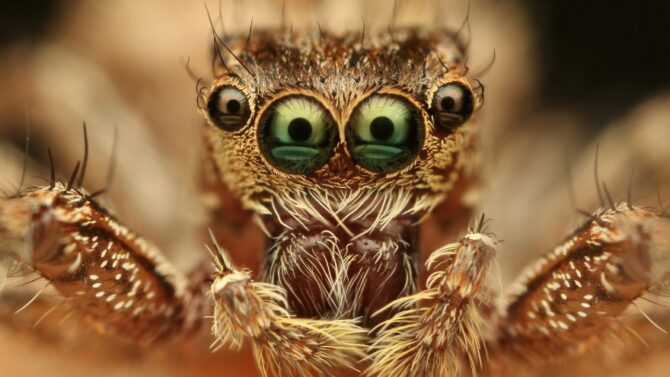Nature is both attractive and strange. The more you observe, the stranger it becomes. This is especially true for animals.
We’ll explore the strangeness of animals by looking into creatures that come with more than 2 eyes. Multiple-eyed animals don’t exist only in sci-fi movies.
Animals with more than 2 eyes include jumping spiders, the Komodo dragon, the praying mantis, bees, ogre-faced spiders, and the box jellyfish.
Here’s a list of 15 different species, including an animal with a thousand eyes!
Examples of Animals With More Than 2 Eyes
1. Komodo Dragon

- Scientific Name: Varanus komodoensis
- Number of Eyes: 3
The Komodo dragon is a large reptile belonging to the family Varanidae, the monitor lizard family.
It is endemic to Indonesia, living in the islands of Komodo, Rinca, Flores, and Gili Montang.
It is regarded as the largest living lizard, growing up to 9.8ft in length and 150 pounds in weight.
These lizards have three eyes, two at the traditional positions and the third part known as the parietal eye.1
This eye is placed on the head and plays a major role in how the Komodo dragon navigates its environment.
This eye isn’t visual but helps the lizard analyze seasons and changes in day and night.
2. Iguana
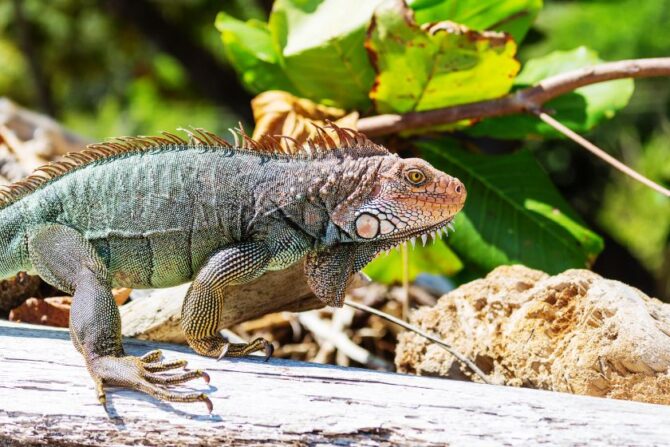
- Scientific Name: Iguana
- Number of eyes: 3
The Iguana refers to a genus (with the same scientific name). It comprises two species, the green iguana and the Lesser Antillean iguana.
This genus is native to South and Central America, staying in countries like Mexico. Iguanas make good reptile pets.
The iguana has a parietal eye, just like the Komodo and many other reptiles. This eye can only be picked out after close observation as it isn’t very visible compared to normal eyes.
The iguana’s third eye also picks up light and is pointed to the sky. This helps it detect when a predator from above is swooping in.
3. Tuatara
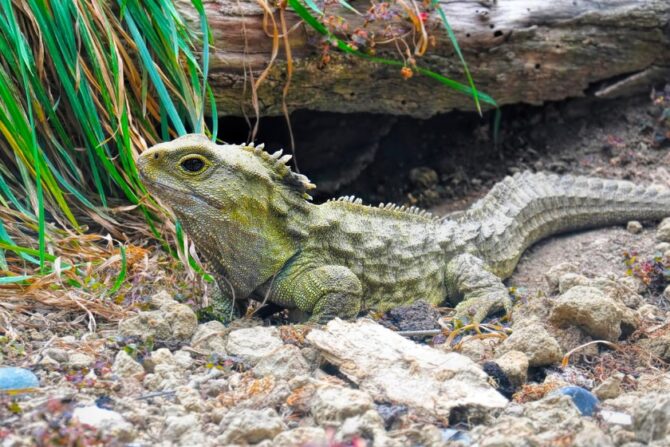
- Scientific Name: Sphenodon punctatus
- Number of eyes: 3
The tuatara is a reptile, though it isn’t considered a lizard. It is rather classified under the order Rhynchocephalia, where it is the only extant species.
The tuatara is endemic to New Zealand, inhabiting coastal waters. It is related to lizards and snakes, but as already mentioned is a different reptile.
Tuataras possess the parietal eye at the top of the head, which also faces the sky.
Unlike the aforementioned reptiles, the tuatara’s third eye is a lot like a normal eye with the lens, retina, and other parts.
However, it doesn’t function like a normal eye as it is covered in scales.
4. Lamprey
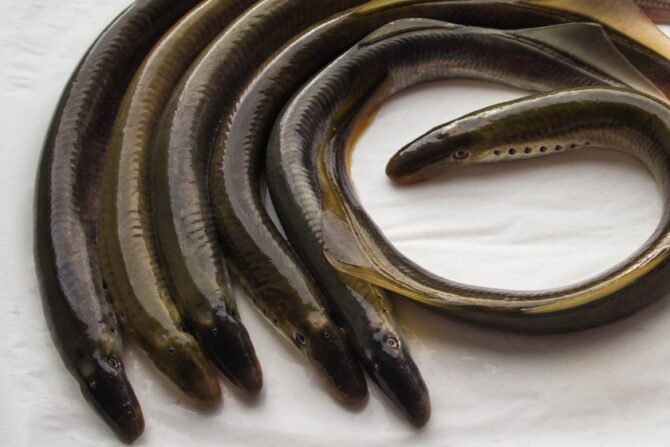
- Scientific Name: Petromyzontiformes
- Number of eyes: 4
The lamprey is a term for species under the order Petromyzontiformes. They are sometimes called lamprey eels, but in reality, they aren’t eels.
There are 38 extant species and 5 extinct species. This creature inhabits coastal and fresh waters.
It is characterized by a mouth shaped like a funnel and lined with teeth.
The lamprey has four eyes. These aren’t very visible but they still exist. The first two eyes are common; then two parietal ones stay at the top of the head.
These eyes are developed from the parapineal and pineal organs, and they serve to protect the lamprey.2
5. Triops
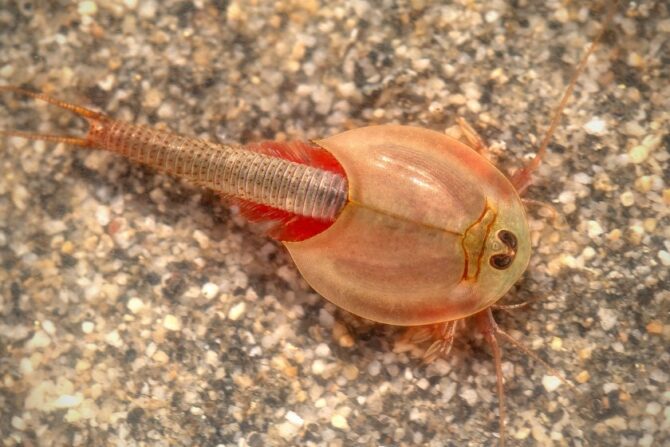
- Scientific Name: Triops
- Number of eyes: 3
The triops is a genus categorized under the Nototrasca order. All triops species are crustaceans.
They are natives of Africa, Asia, Europe, South America, and some parts of North America. Many become pets, while the rest live in pools.
Triops have 3 eyes like reptiles. The third is located in between both eyes and facing upward.
This third eye is somewhat hidden compared to the other two, and it can sense light. Its name is a Greek term that means “three eyes.”
6. Four-eyed Fish

- Scientific Name: Anableps
- Number of eyes: 4
The four-eyed fish is the common term for the genus Anableps which stems from the Anablepidae family.
The name itself points at the number of eyes this fish has. There is some debate as to the exact number of eyes. This is due to how the eyes were structured.
There are only two visible eyes on the fish, and in both eyes, there are lobes. The lobes have pupils that can move in different directions, giving it four different visions.
But whether we classify the lobes as distinct eyes or not, this structure helps the four-eyed fish survive in shallow waters.
7. Bees

- Scientific Name: Antophila
- Number of eyes: 5
Bees are winged insects in the clade Antophila, with 16,000 living species. They are considered close relatives of ants and wasps.
Bees are quite popular for their roles in pollination. The honeybee species is also known for producing honey.
Bees come with 5 eyes, which the average passer-by may not readily notice due to the size.
These eyes are arranged in the shape of a triangle. Two larger eyes show visuals, and three ocelli that detect light. The latter helps bees avoid predators.3
8. Praying Mantis

- Scientific Name: Mantodea
- Number of Eyes: 5
The praying mantis is a large insect order named Mantodea. It contains 33 families, 460 genera, and over 2,400 species.
As a large order, it occurs worldwide, specifically in temperate and tropical habitats.
Because of its folded forearms shaped like a monk in prayer, the Mantodea got the name.
Another attribute of the praying mantis is the number of eyes. Similar to bees, this insect has two compound eyes and three smaller ones that detect light.
9. Starfish

- Scientific Name: Asteroidea
- Number of Eyes: 5
The starfish is a marine animal shaped like a star–hence the name. It belongs to the Asteroidea class.
There are around 1,900 species, and they occur in all oceans, cold or otherwise. They live at a depth of 20,000 ft.
Starfishes have eyespots at the top of each arm, making it 5. These eyespots enable it to find food and avoid predators in its environment.
These eyespots pick up light and darkness, and with the shades of light, the starfish can see.
10. Opabinia
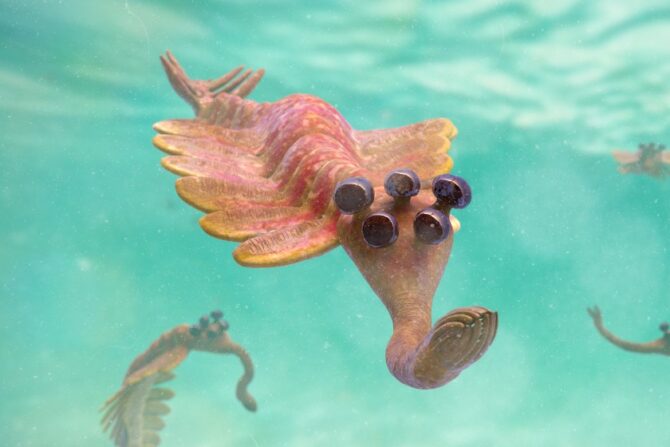
- Scientific Name: Opabinia regalis
- Number of Eyes: 5
The Opabinia regalis has gone extinct, but given its number of eyes, it belongs to this list.
It was an arthropod that lived for around 505 million years. It was discovered in 1911 by Charles Doolittle Walcott.
Fossil evidence shows that Opabinia had five eyes. Unlike the five-eyed animals we’ve seen, Opabinia’s eyes were all compound.
The eyes were positioned all over the face. It also had a soft body and an odd tail.
11. Jumping Spider
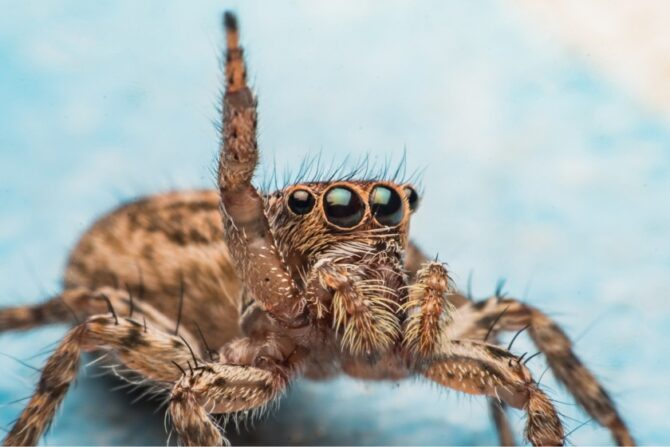
- Scientific Name: Salticidae
- Number of eyes: 8
The jumping spider is an arachnid of the Salticidae family, comprising 600 genera and 6,000 species.
These spiders occur worldwide, inhabiting scrublands, deserts, and mountainous regions, among others.
It is named for its ability to jump, especially when going after prey.
Jumping spiders have eight eyes, which isn’t uncommon amongst arachnids. Two principal eyes move and act like typical visual organs.
Then there are six immobile ones. Together, these eyes give the jumping spider an impeccable sense of sight.4
12. Ogre-faced Spider
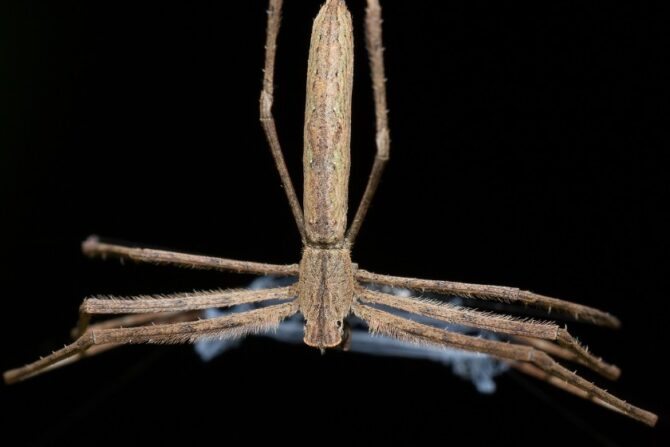
- Scientific Name: Deinopis
- Number of eyes: 8
The ogre-faced spider is also known as the net-casting spider. Both names refer to species in the Deinopis genus, which in turn is in the Deinopidae family.
These spiders are known for spinning webs that propel them to their intended prey. These webs are called nets, hence the second name.
At first glance, the ogre-faced spider looks like a two-eyed arachnid. This is due to the hidden nature of the other six eyes.
Overall, the eyes help ogre-faced spiders see well, especially with low light.
13. Horseshoe Crab

- Scientific Name: Limulidae
- Number of eyes: 10
The horseshoe crab is a member of the Limulidae family, and in the order Xiphosura they are the only extant family. Others have since gone extinct.
The horseshoe crab is not a crab, nor is it a crustacean to begin with. It is a chelicerate, and its close relatives are the arachnids.
Horseshoe crabs come with ten eyes which are not very visible to the naked eye.
These eyes are categorized into three sections, lateral compound eyes, lateral simple eyes, and median simple eyes.
These eyes enable them to sense light, hunt prey and avoid predators.
14. Scorpion

- Scientific Name: Scorpiones
- Number of eyes: 12
A popular arachnid, the scorpion is a species of arachnid in the order of Scorpiones.
They are known for their pincers and the poisonous sting they give. The Scorpion’s main habitat is the desert, but it goes beyond that to occur worldwide.
You can find this arachnid on all continents except Antarctica. There are over 2,500 species.
Scorpions have 12 eyes. The first 2 eyes are placed on top of the head for sight, and the remaining 10 are on the body.
With the lateral eyes, it detects movement and differences between dark and light.
15. Chiton

- Scientific Name: Polyplacophora
- Number of eyes: 1000
The chiton is a mollusk in the class Polyplacophora. This class contains over 1,000 species, though there are currently around 940 extant ones.
The class is called other names like gumboots, sea cradles, suck-rocks, and coat-of-mail shells.
The remarkable attribute of the chiton is the number of eyes. It has up to 1000! These eyes are tiny, made of ocelli, and located on their shell.
They can replace damaged eyes with glowing eyes, and these eyes help them navigate the dark.
Related: Animals With Multiple Hearts
Conclusion
There are species of animals with more than two eyes, ranging from 3 to as many as 1,000. These animals fall into different families, classes, and orders.
Our list is not exhaustive, but we’ve been able to capture the importance of the extra eye for these animals.
While the eyes aren’t always visual, they serve to detect prey, avoid predators and navigate the environment.
References & Notes
- Parietal Eye. ScienceDirect.
- Morphology of the pineal complex of the anadromous sea lamprey, Petromyzon marinus L. Am J Anat.
- Ocelli or “Simple eye”. Bee Informed Partnership.
- How jumping spiders’ senses capture a world beyond our perception. Science News.
